Debo Dutta
MedPerf: Open Benchmarking Platform for Medical Artificial Intelligence using Federated Evaluation
Oct 08, 2021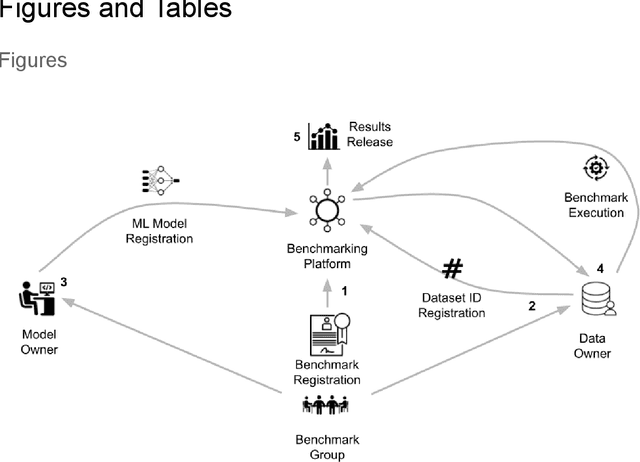
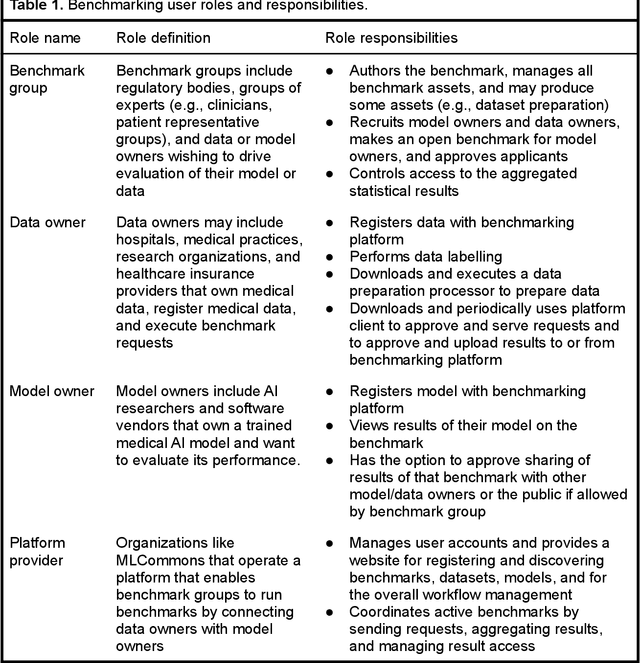
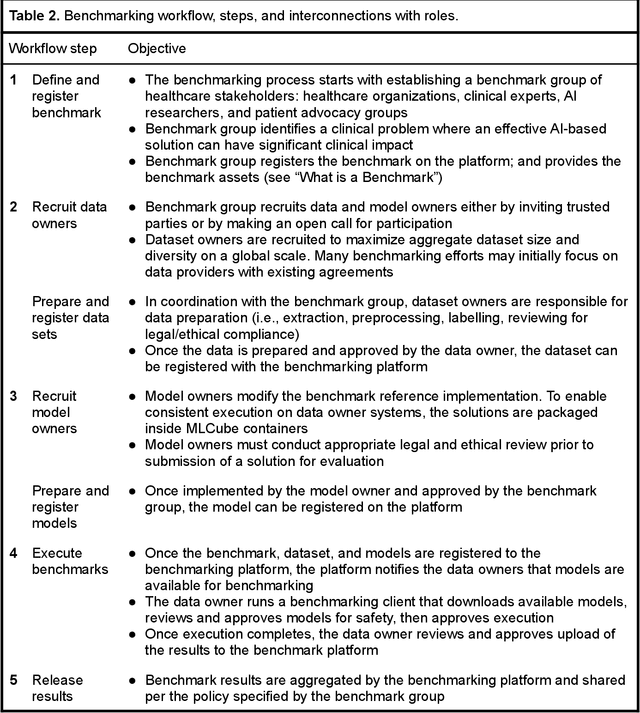
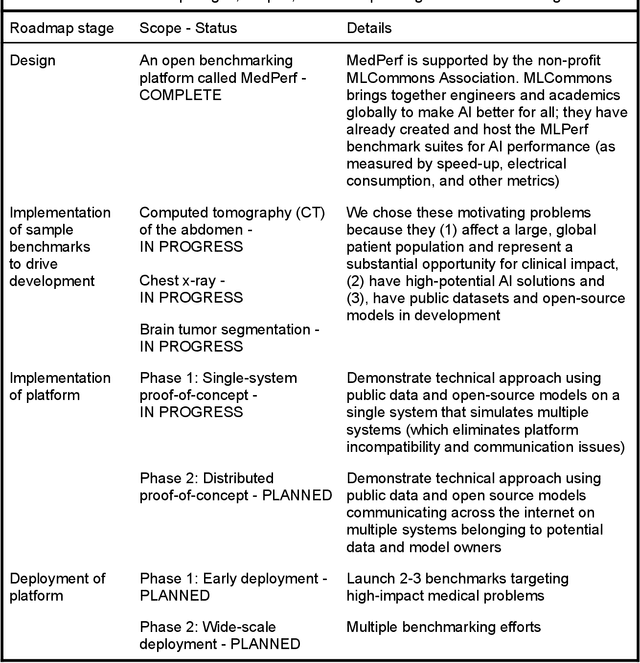
Abstract:Medical AI has tremendous potential to advance healthcare by supporting the evidence-based practice of medicine, personalizing patient treatment, reducing costs, and improving provider and patient experience. We argue that unlocking this potential requires a systematic way to measure the performance of medical AI models on large-scale heterogeneous data. To meet this need, we are building MedPerf, an open framework for benchmarking machine learning in the medical domain. MedPerf will enable federated evaluation in which models are securely distributed to different facilities for evaluation, thereby empowering healthcare organizations to assess and verify the performance of AI models in an efficient and human-supervised process, while prioritizing privacy. We describe the current challenges healthcare and AI communities face, the need for an open platform, the design philosophy of MedPerf, its current implementation status, and our roadmap. We call for researchers and organizations to join us in creating the MedPerf open benchmarking platform.
Direct Federated Neural Architecture Search
Oct 20, 2020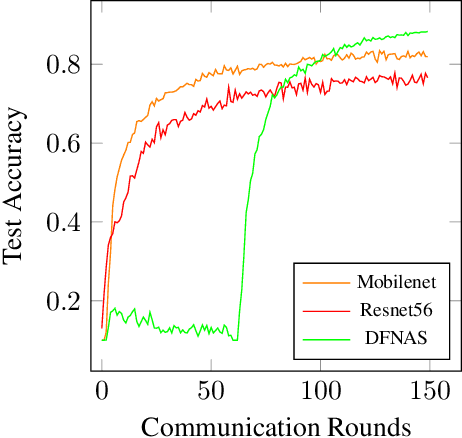

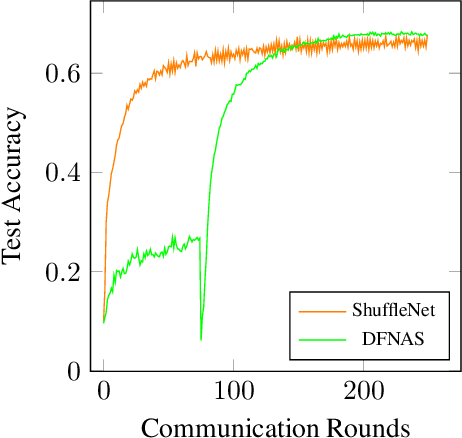

Abstract:Neural Architecture Search (NAS) is a collection of methods to craft the way neural networks are built. We apply this idea to Federated Learning (FL), wherein predefined neural network models are trained on the client/device data. This approach is not optimal as the model developers can't observe the local data, and hence, are unable to build highly accurate and efficient models. NAS is promising for FL which can search for global and personalized models automatically for the non-IID data. Most NAS methods are computationally expensive and require fine-tuning after the search, making it a two-stage complex process with possible human intervention. Thus there is a need for end-to-end NAS which can run on the heterogeneous data and resource distribution typically seen in the FL scenario. In this paper, we present an effective approach for direct federated NAS which is hardware agnostic, computationally lightweight, and a one-stage method to search for ready-to-deploy neural network models. Our results show an order of magnitude reduction in resource consumption while edging out prior art in accuracy. This opens up a window of opportunity to create optimized and computationally efficient federated learning systems.
Revisiting Neural Architecture Search
Oct 18, 2020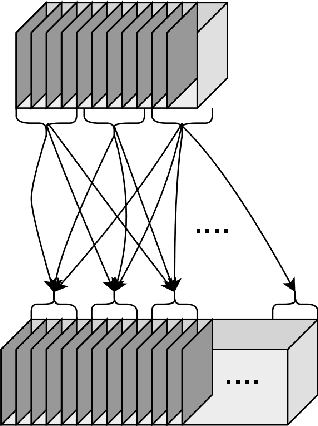
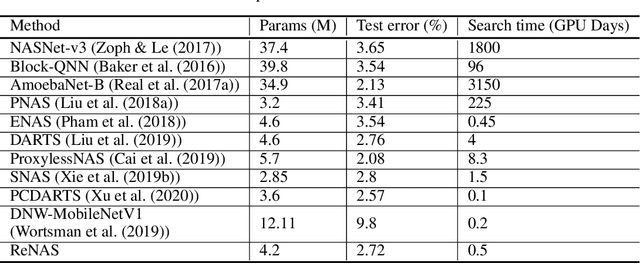
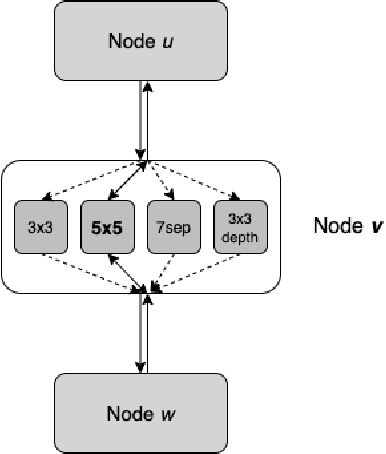
Abstract:Neural Architecture Search (NAS) is a collection of methods to craft the way neural networks are built. Current NAS methods are far from ab initio and automatic, as they use manual backbone architectures or micro building blocks (cells), which have had minor breakthroughs in performance compared to random baselines. They also involve a significant manual expert effort in various components of the NAS pipeline. This raises a natural question - Are the current NAS methods still heavily dependent on manual effort in the search space design and wiring like it was done when building models before the advent of NAS? In this paper, instead of merely chasing slight improvements over state-of-the-art (SOTA) performance, we revisit the fundamental approach to NAS and propose a novel approach called ReNAS that can search for the complete neural network without much human effort and is a step closer towards AutoML-nirvana. Our method starts from a complete graph mapped to a neural network and searches for the connections and operations by balancing the exploration and exploitation of the search space. The results are on-par with the SOTA performance with methods that leverage handcrafted blocks. We believe that this approach may lead to newer NAS strategies for a variety of network types.
NASIB: Neural Architecture Search withIn Budget
Oct 19, 2019
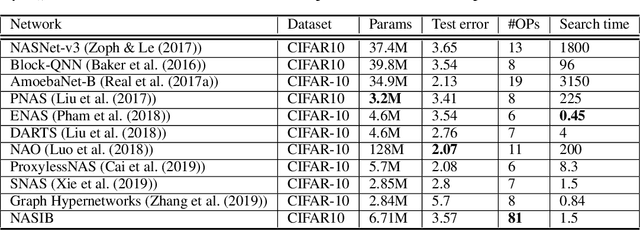
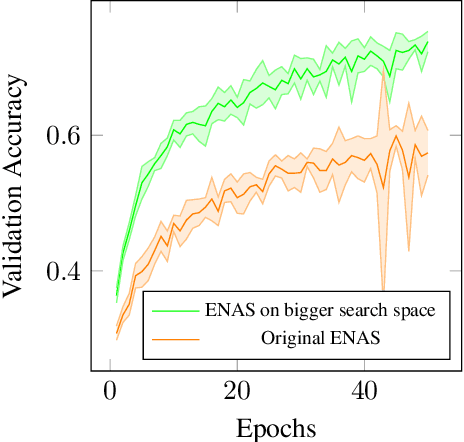
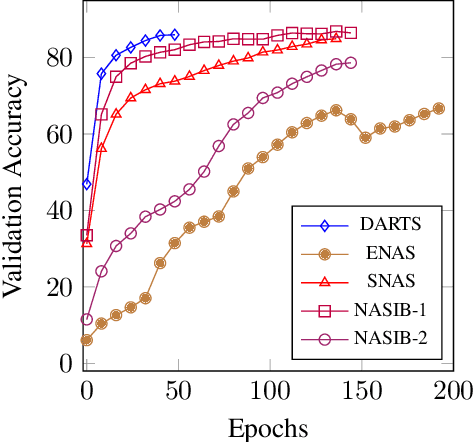
Abstract:Neural Architecture Search (NAS) represents a class of methods to generate the optimal neural network architecture and typically iterate over candidate architectures till convergence over some particular metric like validation loss. They are constrained by the available computation resources, especially in enterprise environments. In this paper, we propose a new approach for NAS, called NASIB, which adapts and attunes to the computation resources (budget) available by varying the exploration vs. exploitation trade-off. We reduce the expert bias by searching over an augmented search space induced by Superkernels. The proposed method can provide the architecture search useful for different computation resources and different domains beyond image classification of natural images where we lack bespoke architecture motifs and domain expertise. We show, on CIFAR10, that itis possible to search over a space that comprises of 12x more candidate operations than the traditional prior art in just 1.5 GPU days, while reaching close to state of the art accuracy. While our method searches over an exponentially larger search space, it could lead to novel architectures that require lesser domain expertise, compared to the majority of the existing methods.
Neural Architecture Construction using EnvelopeNets
May 22, 2018
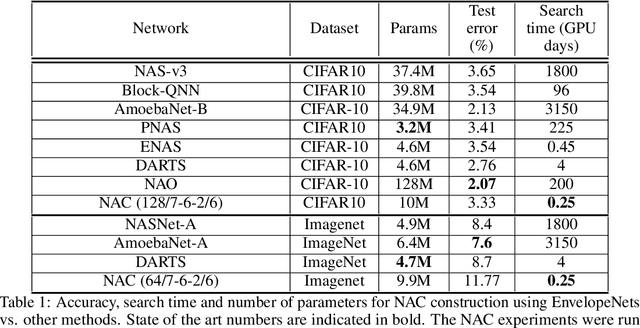
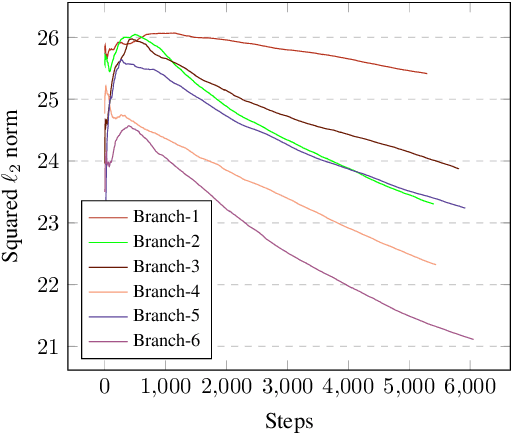
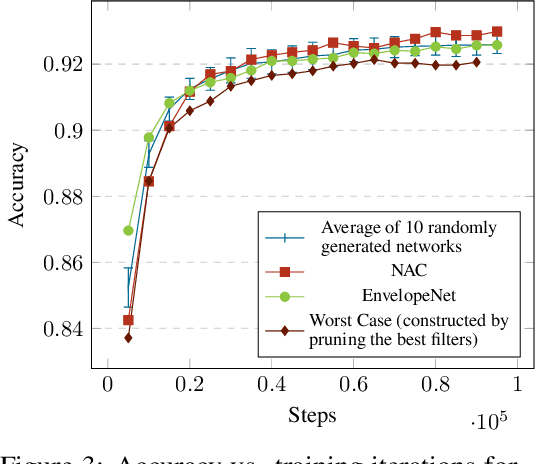
Abstract:In recent years, several automated search methods for neural network architectures have been proposed using methods such as evolutionary algorithms and reinforcement learning. These methods use an objective function (usually accuracy) that is evaluated after a full training and evaluation cycle. We show that statistics derived from filter featuremaps reach a state where the utility of different filters within a network can be compared and hence can be used to construct networks. The training epochs needed for filters within a network to reach this state is much less than the training epochs needed for the accuracy of a network to stabilize. EnvelopeNets is a construction method that exploits this finding to design convolutional neural nets (CNNs) in a fraction of the time needed by conventional search methods. The constructed networks show close to state of the art performance on the image classification problem on well known datasets (CIFAR-10, ImageNet) and consistently show better performance than hand constructed and randomly generated networks of the same depth, operators and approximately the same number of parameters.
 Add to Chrome
Add to Chrome Add to Firefox
Add to Firefox Add to Edge
Add to Edge